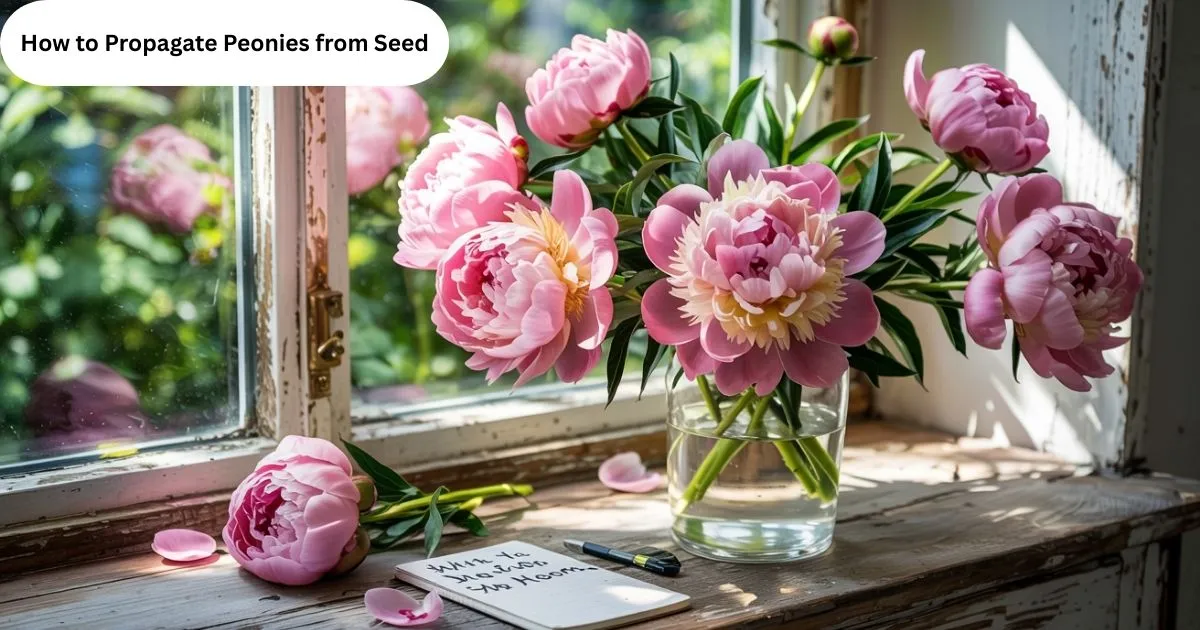Peonies are known for their stunning, fragrant blooms, making them a favorite in gardens. However, once they’ve finished flowering, it’s important to know how to properly care for them to ensure they remain healthy and thrive year after year.
After peonies bloom, they enter a crucial phase where the right care can help them store energy for the next growing season. In this guide, we’ll explore simple steps to take after your peonies bloom, including deadheading, watering, and providing winter protection.
Deadheading Peonies
Deadheading is the process of removing spent flowers from your peony plant. Once the blooms have faded, use sharp scissors or garden shears to cut off the spent flowers. This helps to redirect the plant’s energy into growth rather than seed production. It’s important to remove flowers before they start producing seeds to keep the plant looking tidy.
Deadheading also prevents the peonies from self-seeding, which could result in overcrowded plants. By removing the flowers, you help your peony focus on strengthening its roots and preparing for next year’s bloom. Make sure to cut the flower stem down to the base, but avoid cutting into the foliage or the plant’s stems.
Cutting Back Foliage
Once the blooms are gone, it’s time to think about the foliage. Peony plants typically have large, lush leaves that can remain green long after flowering. However, to help your peony plant preserve energy, you should wait until the leaves start to yellow before cutting them back. This is usually in late summer or early fall.
Cutting back the foliage too early can interfere with the plant’s ability to store energy for the winter. Peonies need their leaves to absorb sunlight and nutrients. Once the foliage starts to turn yellow, you can prune it down to the ground, removing any dead or unhealthy leaves in the process.
Fertilizing After Bloom
After your peonies have finished blooming, they will benefit from a dose of fertilizer to help them prepare for next season. Peonies need nutrients to strengthen their roots and promote healthy growth. Use a balanced fertilizer that is rich in phosphorus, which supports root development and flower production.
Be careful not to over-fertilize, as this can encourage excessive growth or damage the roots. A light application of fertilizer in late summer or early fall is enough. Apply the fertilizer according to the manufacturer’s instructions, and water the plant well afterward to help the nutrients soak into the soil.
Providing Support for Stems
Peonies have large, heavy blooms, and sometimes their stems can weaken after flowering. To prevent the plant from drooping or breaking, consider adding some extra support to the stems. This can be as simple as using garden stakes or a peony ring to hold the stems upright.
Even after the blooms have faded, the foliage can become heavy, especially after rain. Using supports ensures that the plant remains sturdy and doesn’t get damaged by strong winds or heavy rainfall. This will also help the plant maintain a neat appearance throughout the growing season.
Watering After Bloom
Peonies require consistent moisture throughout the growing season. However, after blooming, their water needs decrease slightly. It’s essential to continue watering your peonies regularly, but make sure the soil has proper drainage to prevent waterlogged roots. Peonies prefer well-draining, slightly dry soil.
If you live in a region with heavy rainfall during the summer, you may not need to water your peonies as often. But if your area experiences dry conditions, watering will help keep the plant healthy. Be sure to water at the base of the plant to avoid getting the foliage wet, as damp leaves can encourage fungal diseases.
Mulching Around the Base
Mulching around the base of the peony plant provides several benefits. It helps retain moisture, suppresses weeds, and insulates the roots against extreme temperatures. Apply a layer of mulch, such as wood chips, shredded bark, or straw, around the plant’s base after the blooms have faded.
Mulching also adds nutrients to the soil as it breaks down, promoting healthier plant growth. However, make sure not to pile the mulch directly against the stems. Leave a small gap around the plant to prevent moisture buildup and the risk of rot. Reapply mulch as needed throughout the growing season.
Protecting Peonies During Winter
Peonies are hardy plants, but they still need some protection during the winter months. Once the leaves have died back completely, you can cover the base of the plant with a layer of mulch or straw. This will help protect the roots from freezing temperatures, especially in areas with harsh winters.
In regions where temperatures drop below freezing, you can add an extra layer of mulch to provide additional insulation. Avoid cutting back the stems in fall or winter, as they offer some protection to the plant. Wait until early spring to trim any remaining dead growth, allowing the plant to naturally protect itself during the colder months.
Dividing Peonies for Better Growth
After a few years, your peony plant may become overcrowded, leading to fewer blooms. If this happens, dividing the peonies is a great way to rejuvenate the plant. The best time to divide peonies is in early fall, after the foliage has died back but before the ground freezes.
To divide peonies, carefully dig up the plant, ensuring you don’t damage the roots. Gently separate the clumps, making sure each division has at least three to five eyes, which are the growth buds. Replant the divisions in a well-prepared spot, and they should thrive in their new location, producing even more blooms next year.
Read More: How to Propagate Peonies from Seed
Conclusion
In conclusion, taking care of peonies after they bloom is crucial for their continued health and beauty. By deadheading, cutting back foliage, fertilizing, and providing necessary support, you help your peony plants store energy for the next season. Proper watering, mulching, and winter protection ensure that your peonies stay strong and vibrant year after year.
Dividing peonies when necessary encourages better growth and more blooms. With these simple steps, your peonies will thrive, creating a stunning display in your garden each spring. Proper post-bloom care ensures that your peonies remain a long-lasting and beautiful addition to your landscape.
FAQ’s
When should I cut back my peony after it blooms?
Cut back your peony’s foliage once it starts turning yellow in late summer or early fall.
How often should I water peonies after they bloom?
Water peonies regularly, ensuring the soil remains slightly moist but not waterlogged.
Should I remove dead peony flowers right after they bloom?
Yes, deadheading encourages the plant to focus energy on root growth rather than seed production.
Can I divide my peony plant after it blooms?
It’s best to divide peonies in early fall after the foliage has died back.
How can I protect my peonies during the winter?
Cover the base with mulch to insulate the roots and prevent freezing.









